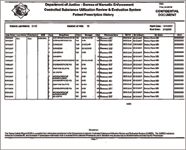Is your patient getting his Oxycontin filled elsewhere?
Pharmacists play a pivotal role in identifying patients with an abuse problem.


Pharmacists play a pivotal role in identifying patients with an abuse problem. Often times, pharmacists are the only ones in a position to recognize that a problem is occurring. Understanding a patient's unique individual pain needs and being comfortable with the patient's pain program are all factors that can aid the pharmacist's screening process. With the establishment of PDMPs, authorized personnel can gain access to a pool of uniform information to help differentiate and weed out legitimate versus illegitimate drug use.

Since the program's inception in California, we have had cases where we discovered patients utilizing multiple pharmacies to fill the same prescription, patients forging their own prescriptions, and justifiable cases where patients were thought to be abusers but were not. However, the most significant impact has been with aiding pharmacists in making a case to a prescriber that a patient may have a problem. A pharmacist's quick conversation with a prescriber or his office's ancillary staff doesn't invoke the same response as good old-fashioned government documentation. This may be especially true in situations when we are having a difficult time trying to reach a physician who is too busy to take the time to listen to our concerns. Once a PAR is sent to a physician, it gives substantially more weight and credibility to our case and also requires an increased level of responsibility for the prescriber.